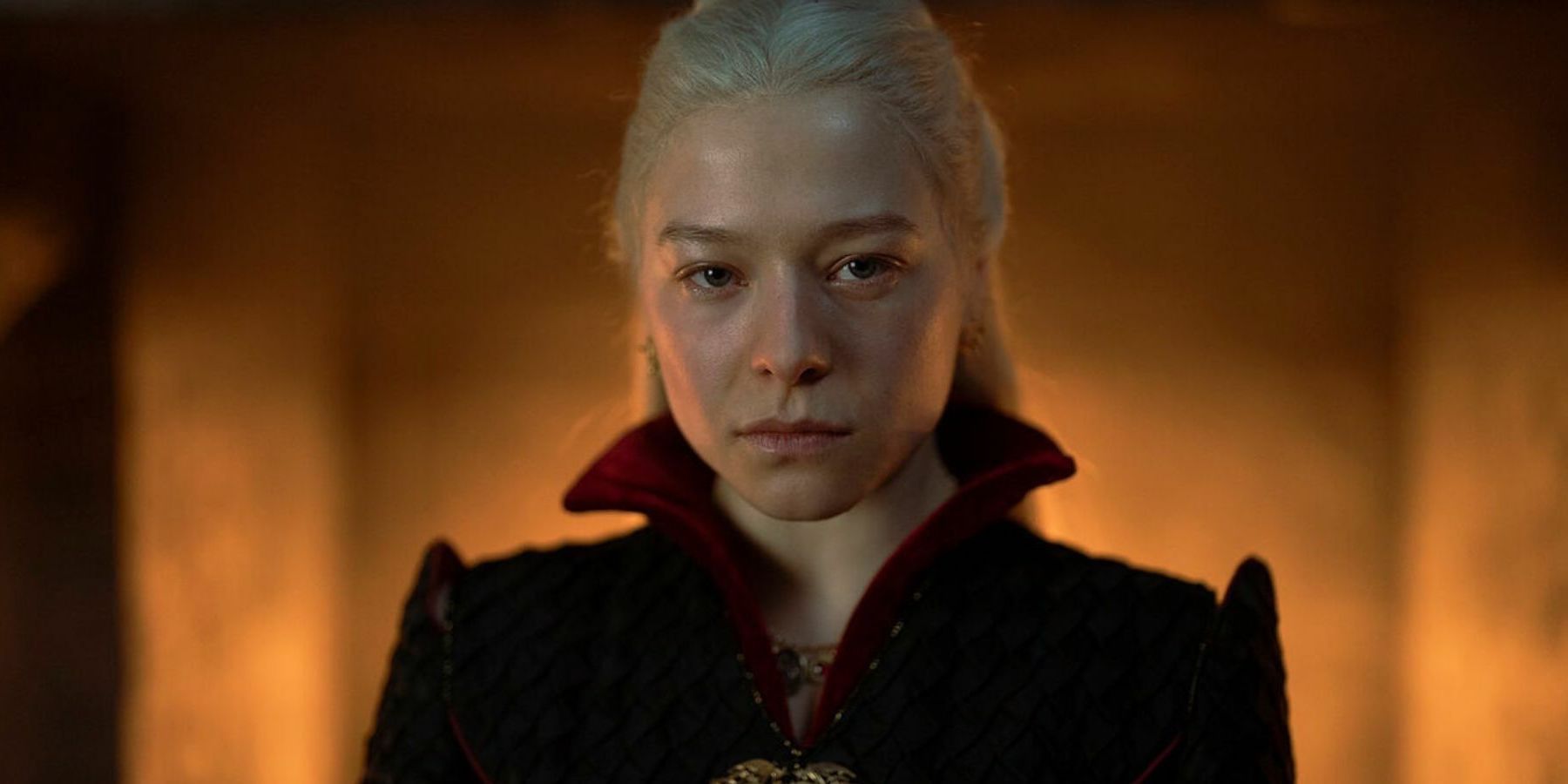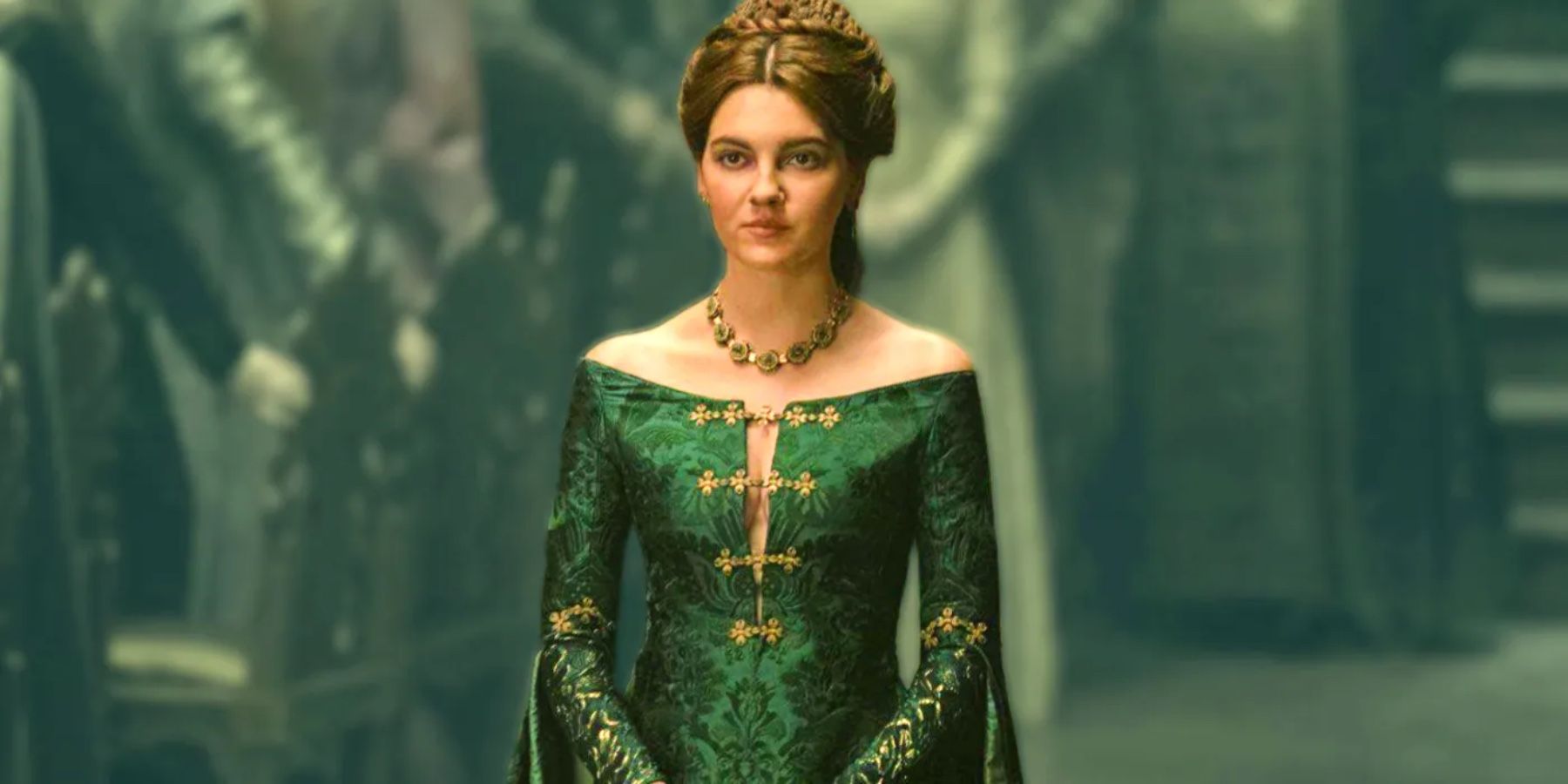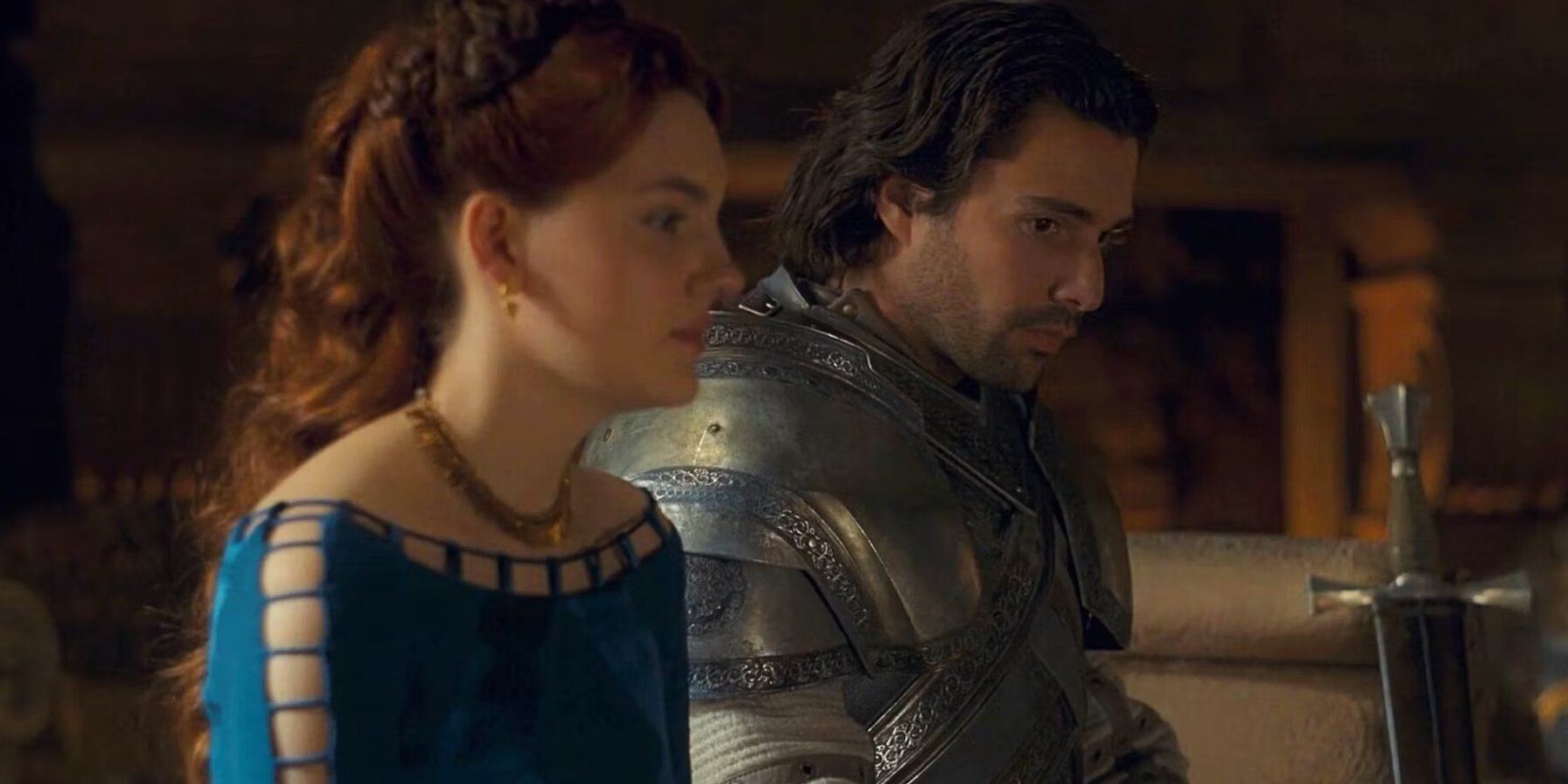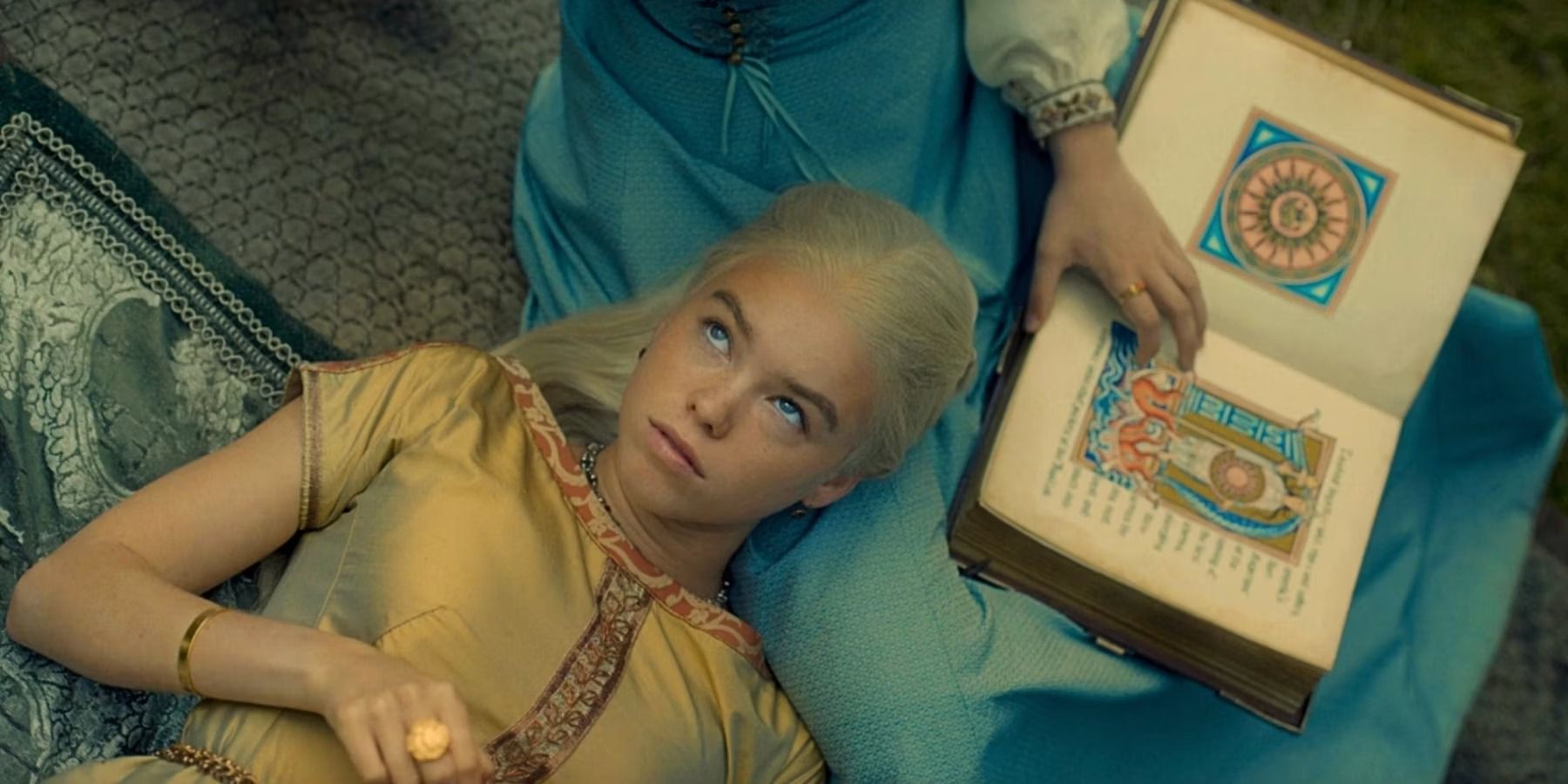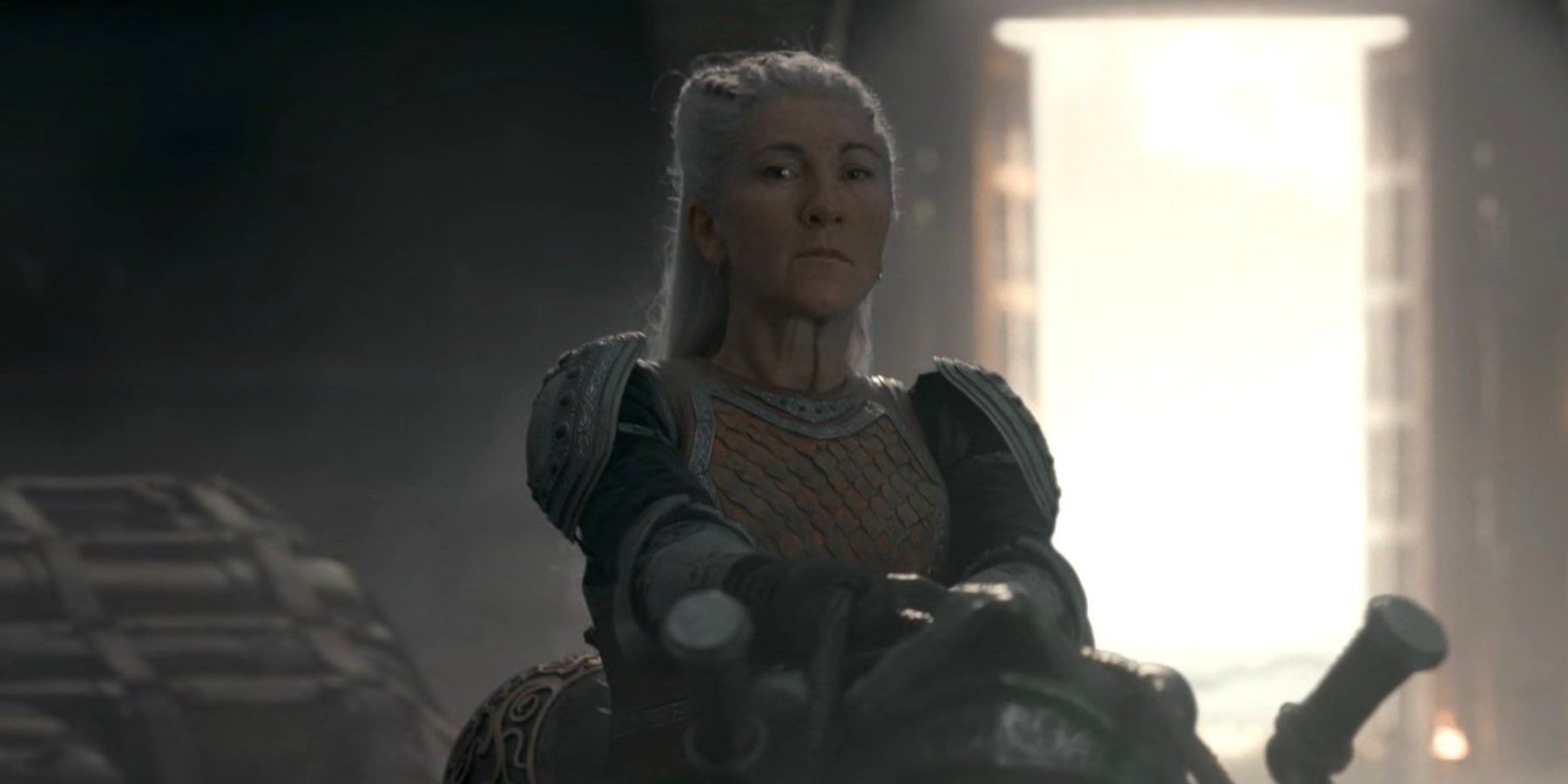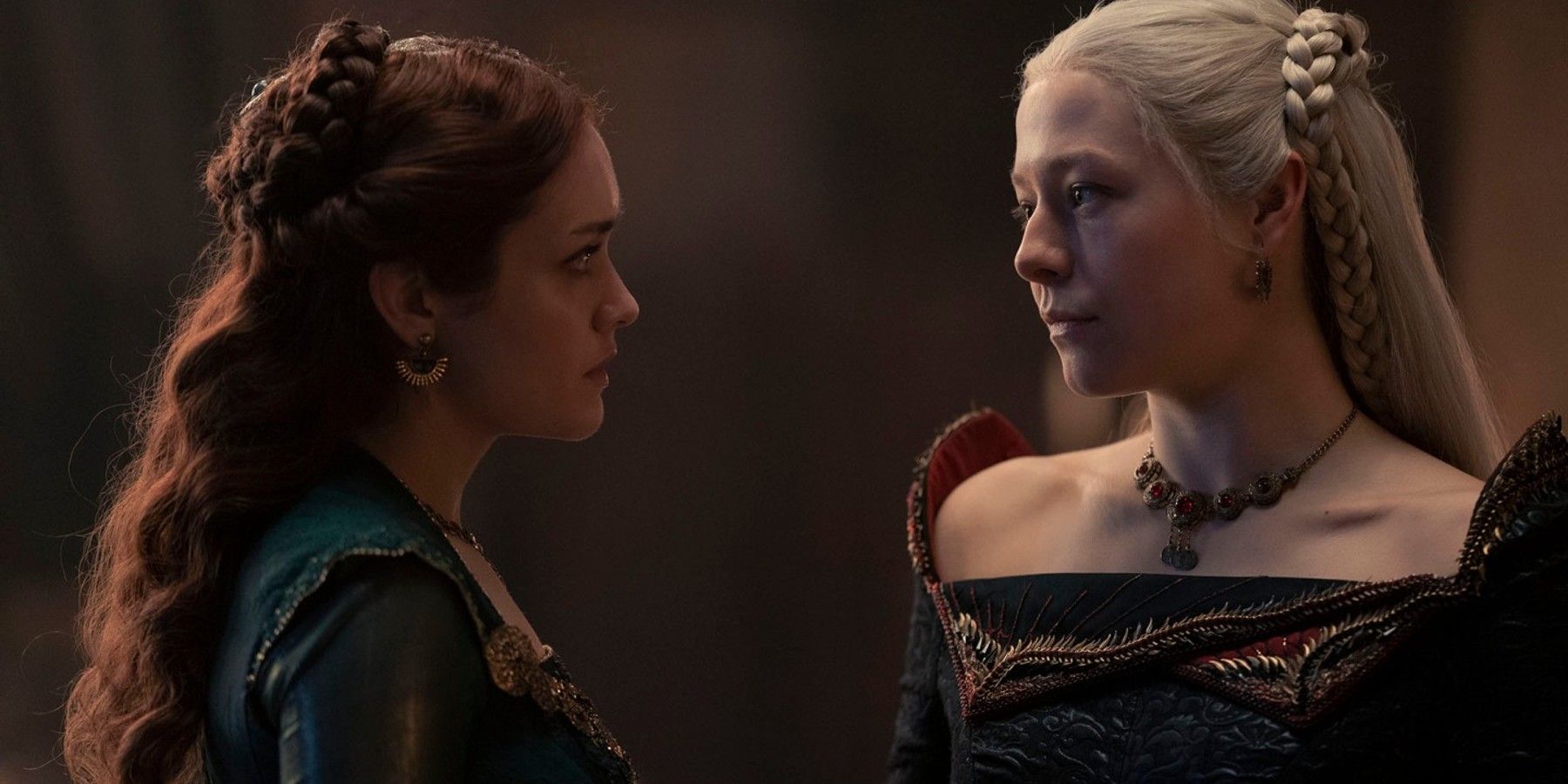House of the Dragon is based off of Fire & Blood, a book written by George RR Martin that covers the first half of the Targaryen dynasty in Westeros. Purported to be written by a Maester of the citadel, Grand Maester Gyldayn, the book is an in-universe account. As such, it has many biases and lacks sources for certain events, meaning its retelling is not objective.
As an adaptation, House of the Dragon would have always faced certain challenges when bringing the plot to the screen. But since the book is written subjectively, there was more leeway to make changes to the source material. In fact, the section of the book that concerns House of the Dragon - titled “The Dying of the Dragons” - is told from the point of view of three different characters, all with their own biases and agendas. Since the series follows an objective take on the Dance of the Dragons, it makes sense that not everything would transpire exactly as it purportedly does in the books. Some of these changes worked better than others, however.
Worked: Making Alicent (& The Greens) More Sympathetic
One of the central changes to the show was making Alicent, and by extension, the Greens, far more sympathetic than they are in Fire & Blood. Alicent is quite the schemer when she appears in Fire & Blood - but she can also, at times, come off like the classic “evil stepmother” trope often seen in fairytales.
By contrast, the Alicent as portrayed in the show by Emily Carey and Olivia Cooke is far more sympathetic and becomes a deeper character as a result. She still retains her cunning and her heart darkens as she ages, but she begins the show as a naive young girl who’s manipulated by her father Otto (Rhys Ifans) into becoming the Queen. The first half of the season portrays Alicent in a downright blameless light - making the shift to Olivia Cooke’s portrayal of Alicent that much more startling for audiences.
Didn't Work: Too Many Misunderstandings and Mishaps
One thing that must be said for the characters in Fire & Blood is that they are agents of their own fate. Their actions are decisive, if cruel, bloody, and even wrong at times. But the characters are fully accountable for the decisions they take.
House of the Dragon decides to take a different approach: what if history did not take into account the all-too-human quality of error? The issue with that is that there’s simply too many misunderstandings at pivotal moments in the show that make the events seem almost like a farce.
One of these instances occurs with Alicent approaching Ser Criston Cole (Fabien Frankel) to ask about an alleged sexual encounter between Rhaenyra (Milly Alcock) and her uncle Daemon (Matt Smith), only for Ser Criston to misinterpret what Alicent is asking and confess to sleeping with Rhaenyra himself. A far larger one occurs in episode 10, the season finale, when Aemond (Ewan Mitchell) chases Lucerys (Elliot Grihault) on Vhagar, loses control of his dragon, and accidentally kills Luke, starting the war. The effect this has is that it effectively strips away the agency of several characters.
Worked: Making Alicent and Rhaenyra Friends
The Alicent of the books is about a decade older than Rhaenyra. She immediately assumes more of a stepmother-type of role than that of a friend because of this age gap, but House of the Dragon instead chose to make Alicent and Rhaenyra of an age with one another. As a result, the two are much closer before their estrangement, and their split becomes much more of a focal point in the drama.
Seeing Alicent and Rhaenyra grow apart casts a much more complicated relationship between the two. Lingering glances and certain acting choices can even be taken to mean that the two have a sort of romantically charged energy between them - making it all the more devastating for Rhaenyra when her father Viserys (Paddy Considine) chooses to marry her best friend in episode 2 of House of the Dragon - and more painful when Rhaenyra believes that Alicent has been conspiring to take her dead mother’s place.
Didn't Work: Focusing on Style Over Substance
It’s a problem that plagued later seasons of Game of Thrones all too often: plot, character, and sense are discarded in favor of spectacle. House of the Dragon’s freshman season was an amazing return to form for the franchise, but there were a few moments where it was worryingly erring on the logic of Game of Thrones’ later seasons.
For instance, Ser Criston Cole kills Ser Joffrey Lonmouth (Solly McLeod) at a feast celebrating the betrothal of Rhaenyra to Laenor Velaryon (Theo Nate). Not only is Joffrey secretly the lover of Laenor, he’s an important part of the Velaryon entourage: a respected guest of House Targaryen. Yet one of their Kingsguard beats him publicly to death (and hits Laenor, the King Consort to be) and is never punished. In fact, the incident is never brought up again. In the books, this incident occurs during a tourney, and Criston has plausible deniability - tourneys are dangerous.
In another instance, Princess Rhaenys Targaryen (Eve Best) escapes confinement by bursting out of the floor of the Dragonpit during Aegon’s (Tom Glynn-Carney) coronation. In what is framed in a moment of heroism, Rhaenys does not burn Aegon and his family despite their usurpation. The behind-the-scenes of the episode reveals that this is supposed to show off Rhaenys as the one most worthy to be Queen.
Except she stomps on hundreds of smallfolk to do so. Those that do not die when Rhaenys breaks out of the floor are crushed beneath her dragon Meleys’ feet. Her mercy also allows the conflict to begin in proper - condemning thousands to death. The morals of the decision are not called into question, nor is it framed as a moral quandary. This is not acknowledged at all - and Rhaenys leaves in a much more sensible manner within Fire & Blood.
Did and Did Not Work: The Time Jumps
The time jumps were an inevitability. To fully understand the scope and conflict of the Dance of the Dragons requires taking audiences on a years-long journey, which is precisely what House of the Dragon does. From the Great Council of 101 AC, the story spans about thirty years.
The time jumps mess with the pacing greatly, it has to be said. There isn’t much time to get to know several important characters, like Ser Harwin Strong (Ryan Corr), father of Rhaenyra’s three eldest children, before they must die and serve their role in the story. Viewers miss out on several key developments and much play catch-up at several points in the story - there simply isn’t the time to cover events like Rhaenyra and Harwin’s courtship or Daemon’s time in Pentos or even his initial marriage to Laena (Nanna Blondell).
But this is all necessary to get to the point of the story where most of the conflict lies: the Dance of the Dragons. The first season finale ends at a perfect spot, with Rhaenyra (now Emma D’Arcy) ready for war and fed up with her losses to the Greens.
Perhaps the story could have compromised and done 12 episodes rather than the usual 10. That would allow for some more breathing room in the story, and wouldn’t compromise the pacing as much. It is a foregone conclusion now, though, for better or for worse, and ultimately it’s a mixed bag.
House of the Dragon had a strong first outing. While there are definitely ways for the show to improve, there’s also many ways in which the show succeeded at bringing the audience back into the world of Game of Thrones. There’s quite a few lessons for this crew to learn, and a few that the other developing spin-offs (like the reported Jon Snow sequel) may take heed of as well.
House of the Dragon is available for streaming on HBO Max.

